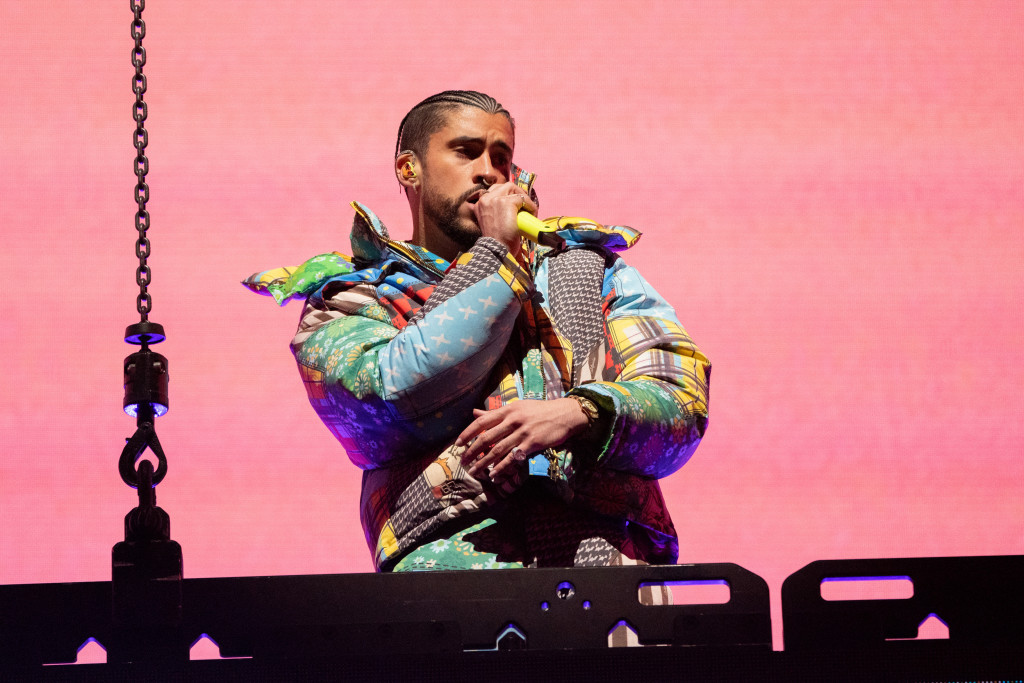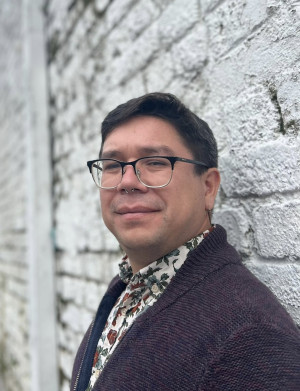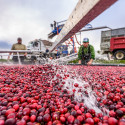Pop star Bad Bunny needed a Puerto Rican history scholar. UW–Madison had just the one.

Bad Bunny (above) vibed with UW–Madison professor Jorell Meléndez-Badillo’s book on Puerto Rican history — and then collaborated with him on a new chart-topping album. Photo by Amy Harris/Invision/AP
How would you feel if, out of the blue, Puerto Rican superstar Bad Bunny called to ask you a favor? Last December, that’s what happened to Jorell Meléndez-Badillo, a University of Wisconsin–Madison assistant professor of Latin American and Caribbean history. Bad Bunny (aka Benito Antonio Martínez Ocasio) vibed with Meléndez-Badillo’s acclaimed 2024 book “Puerto Rico: A National History,” and the rapper’s team proposed that the scholar write historical narratives to accompany videos for the new album “DeBÍ TiRAR MáS FOToS.”
Meléndez-Badillo dove into the project and composed entries for 17 songs within a week. Four days later, the videos with his Spanish-language text dropped on YouTube, racking up millions of views and making the UW professor something of a superstar himself. Sales spiked for “Puerto Rico: A National History,” and international media clamored for interviews.
Meléndez-Badillo was gratified by the chance to explore Puerto Rico’s challenges while celebrating its distinctive culture. His Bad Bunny adventure, he says in our recent conversation, has been “mind-blowing.”

Meléndez-Badillo: “Never in my life did I think that Bad Bunny would help my scholarship reach such broad audiences.” Photo by Aurora Santiago Ortiz
Why did Bad Bunny reach out to you?
I think it’s because of the reception my book “Puerto Rico: A National History” has had in Puerto Rico. It seeks to understand the current political moment, and it aligned with the vision Bad Bunny had for “DeBÍ TiRAR MáS FOToS.” The book is a history of Puerto Rico from pre-Columbian societies all the way to Bad Bunny, shedding light on communities that have been marginalized throughout history: working-class movements, feminist movements, queer movements. It’s interested in how history can help us to understand the present and also to envision potential futures.
What is the current political moment in Puerto Rico?
Puerto Rico has been undergoing a series of fiscal, political and social crises since at least 2006. In “Puerto Rico: A National History,” I trace the longer history of that crisis. We have a frail infrastructure, and there’s a massive exodus of Puerto Ricans leaving the archipelago. It’s a series of unfortunate events caused mainly by colonialism and lack of sovereignty.
Why do you think the book connected with Bad Bunny and other Puerto Ricans?
I’ve always been guided by teachings from my grandparents, and I tried to add a human element to the narrative. I come from a working-class background, and that serves as my intellectual compass for the questions I ask about history. I wanted to write a book that could be taught in university classrooms but also read outside of the university — one that would be accessible to my grandparents, who made it to the fourth and sixth grade. It’s received a lot of attention and is being sold in the airport and in pharmacies in Puerto Rico. I hope it’s helped people understand the complexities and the beauty of Puerto Rican history.
Were you a Bad Bunny fan before he contacted you?
A huge fan. I’ve seen him multiple times and have also written about him in a scholarly way alongside UW–Madison professor Aurora Santiago Ortiz. So I was excited when someone on his team reached out to me about a collaboration. We got on the phone, and the team explained that the record is a tribute to Puerto Rican culture and music — a national affirmation in the face of displacement and gentrification. I immediately said yes.
How did you approach the writing?
Bad Bunny was interested in a general overview of Puerto Rican history to go with the YouTube videos, so I wrote historical narratives that cover the conquest by the Spanish empire in 1508 until the present day. They also focus on specific topics like the creation of the Puerto Rican flag, strikes in the sugarcane industry, and Afro musical styles in Puerto Rico, from bomba and plena to reggaeton.
What’s been the response?
I’ve gotten messages from people around the world thanking me because they did not know anything about Puerto Rico — its colonial history and the richness of its culture. I’ve also gotten messages from Puerto Ricans who are learning about their own history. And Puerto Rican teachers have been incorporating the information in their classrooms.
Given this new wrinkle in your career, is UW–Madison a good place to continue your work on Puerto Rican history?
UW–Madison was always my dream job. The university has a great tradition of Latin American and Caribbean scholarship, and some of the greatest minds in the field were trained here. So I was over the moon when I got an offer to be part of that and am now working to expand Puerto Rican studies at UW.
I became a historian because I wanted to share the knowledge with people outside of academia. But never in my life did I think that Bad Bunny would help my scholarship reach such broad audiences, using the biggest platform in the world.
Tags: arts, College of Letters & Science, history




